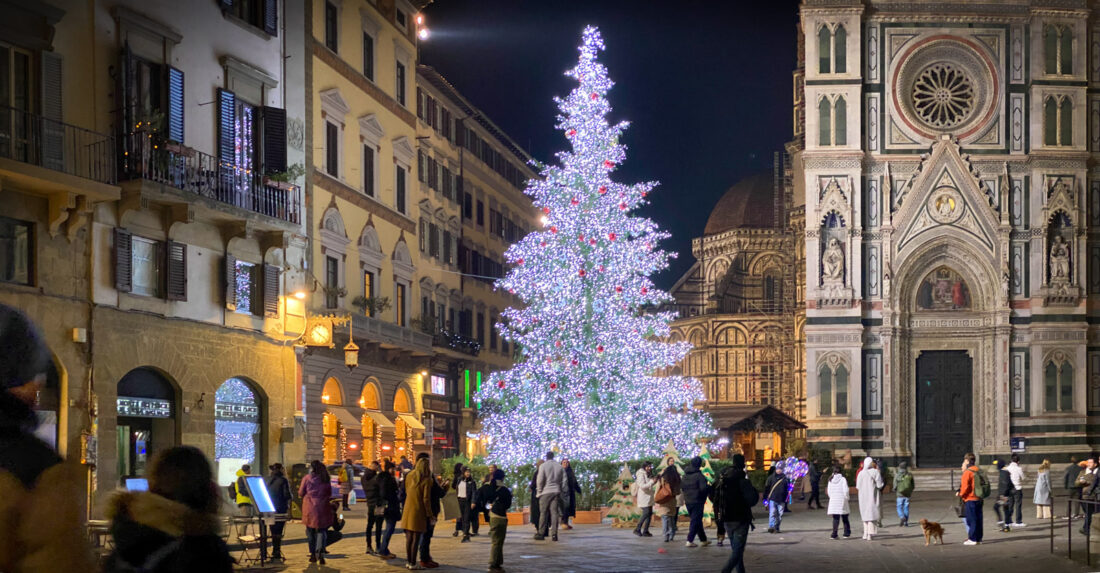
What the Italians Don’t Get About the Holidays
Being in a mild state of panic seems to be obligatory around the holidays to us Americans, and we wondered if the Italians feel the same on Christmas Eve. John suggested a little experiment when I, feeling pretty overwhelmed myself, needed to get groceries for the feasts. The very unscientific test was to observe faces while I shopped looking for signs of stress. I found very few. Smiling people passed me in jammed aisles, carts loaded, and most said a cheery “Auguri!”, or “congratulations” when they met my eye. I found very few people who looked strained or hurried. Even the thirty or so people waiting at the fish counter to buy their selection of seven different types of seafood to serve on Christmas Eve were smiling and chatting as the clerks assembled each person’s detailed order. The Italians I saw clearly have no idea how this season is meant to be celebrated. Don’t they understand that you have to be frazzled and overwhelmed?
The one thing that might prompt tension in the store is if there was a debate between Team Panettone and Team Pandoro. Italy’s affection is pretty equally divided and the loyalties are strong about the ubiquitous sweet breads. Panettone and pandoro differ in shape—a cylinder with a dome-shaped top for the former and a tall, star-shaped body for the latter. Panettone has candied fruit, sultanas, and possibly chocolate; pandoro is made from a plain, sweet dough. And pandoro is served with icing to complement its simplicity.
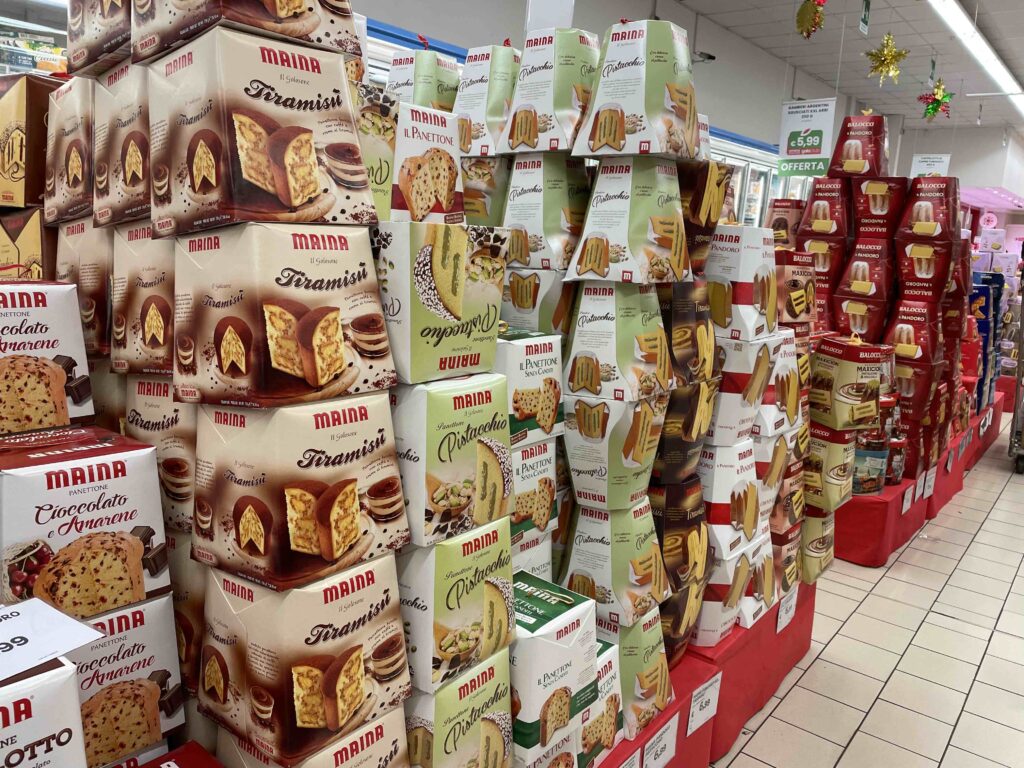
I love that most Italian cities and villages (as well as towns throughout Europe) go all out on decorations. Streets are lit by fanciful and creative lights draped between buildings, and nearly every town, no matter how small, will have a giant tree in the piazza.
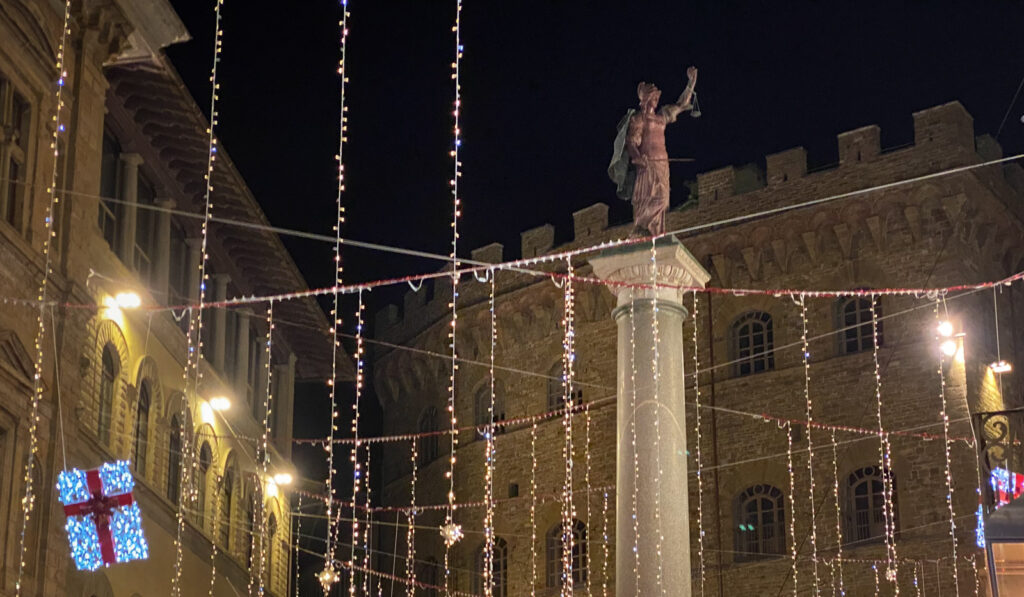
Our village has several evenings when it is lit solely by thousands of candles, a romantic and beautiful sight. The village of Gubbio creates the world’s largest Christmas tree out of lights that stretch 2,000 feet down a steep hill from a monastery perched above to the village below. The tree can be seen from as far as 30 miles away.
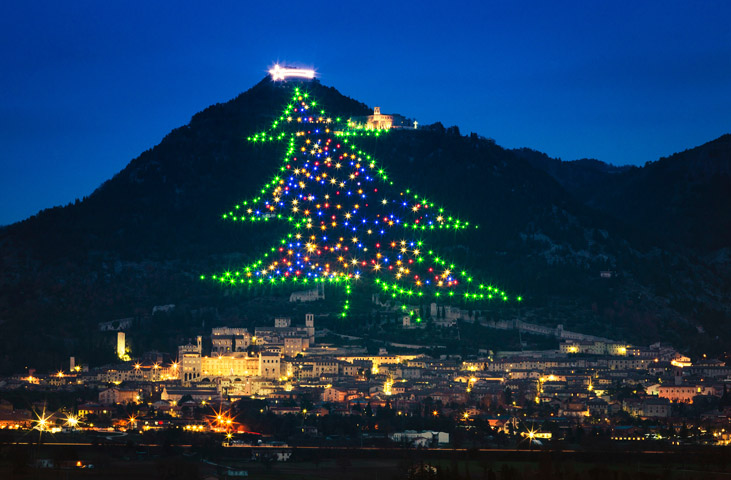
Christmas markets are an import from Germanic countries, and have evolved and grown in Tuscany over the decade we’ve lived in Italy. Verona and Bolzano have older and larger markets that we’ve particularly enjoyed when we needed a dose of Christmas spirit.
Some towns have quirky local traditions. In our village, the local Vespa club helps the town celebrate on Christmas Eve with members dressing up as Santa and storming, on their largely vintage Vespas, into the square to distribute wrapped gifts to the kids. It is fun to spot people you know, male and female, under their white beards as they roar past. Some years the gifts are better than others. One memorable misfire was when they distributed grammar books, much to the disappointment of the kids.
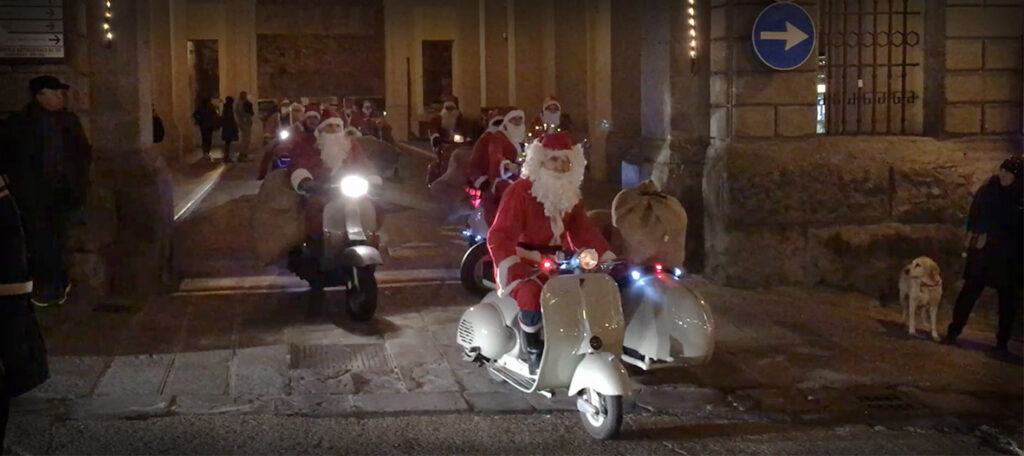
Living nativities, where volunteers dress in costume and recreate biblical scenes, happen across Italy. There are some hugely famous ones, like in the cave city of Matera, but we have a much beloved local edition with hundreds of volunteers in scenes that continue for over a kilometer, lit only by candles and with a sound track from Ben Hur. From a Roman slave market to a field of lepers, the creators have taken a pretty broad brush to the Christian nativity story in a delightful way.
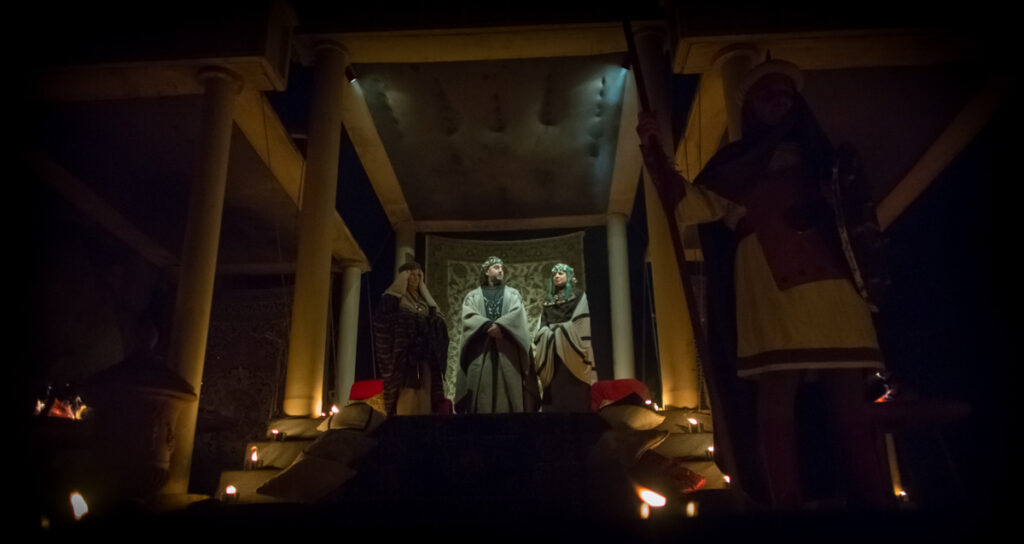
New Year’s Eve has its own, very Italian, traditions. One that is taken quite seriously is that everyone is supposed to put on new, red undergarments to welcome in the new year. This tradition has a long history symbolizing fertility and fortune. I was surprised our first year here to see the store windows filled with all kinds of women’s and men’s red underwear ranging from demure to risque. While wearing one’s red panties there’s only one thing to eat—lentils. If you squint they can look vaguely like coins, and are mandatory to have at midnight to ensure wealth in the coming year. The more lentils you eat the more coins you’ll have pouring in, according to tradition. Around our part of Italy lentils are often topped by cotechino, a large pork sausage cooked slowly and cut into rounds, or zampone, sausage encased in the front shin and hoof of the pig. These are readily available in big displays in the supermarket—not refrigerated—a mystery I’m not sure I want to solve.
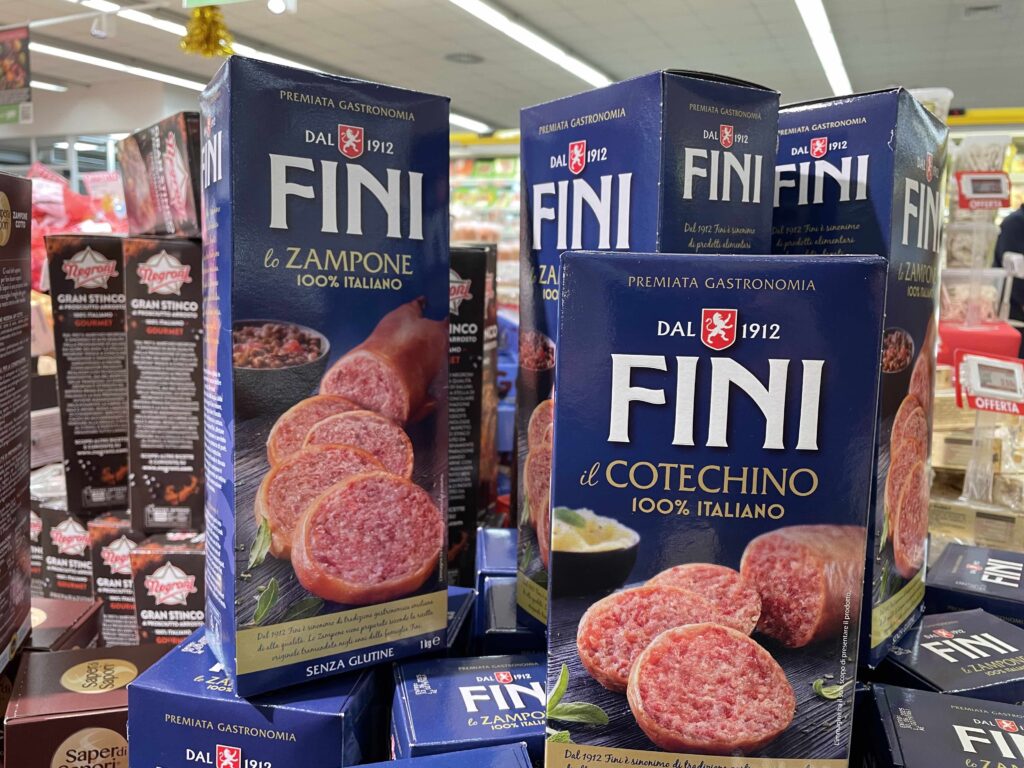
If you’ve ever wished for the holiday season to extend past January 1st, Italy has your answer. The holidays are in full swing until January 6th, the Epiphany. Those extra six days are a delight—the pressure of gifts, what to do for New Year’s Eve, and other items on the holiday to do list are all checked off with only relaxing, enjoying the lights, taking walks, and continuing to eat lovely things left on the agenda. This period is not totally shut down, life continues to pick back up to normal, but it does provide a few days to have an excuse to jump back in slowly.
The isn’t a tradition of Christmas stockings left on Christmas Eve, except in our house due to popular demand, but rather of an eccentric, old, flying witch, La Befana, who leaves stockings full of presents for good children (or coal, straw, or garlic for bad ones) on the night of January 5th—Epiphany Eve. She’s from Rome and the city has a large market in the Piazza Navona dedicated to her.
Once again, the Italians are shaping me and teaching me how to live. After my observations in the grocery store, looking up to notice and appreciate the warmth and excitement in the eyes that met mine, I realized that maybe this season isn’t all about getting things done to make things perfect, but appreciating the perfect moments that are already in front of me, even in a crowded grocery store. Hopefully holding this beyond this season and into the New Year. Wishing for peace, human connection, and a spark of excitement for you all in 2024. Tanti auguri.






No Comments